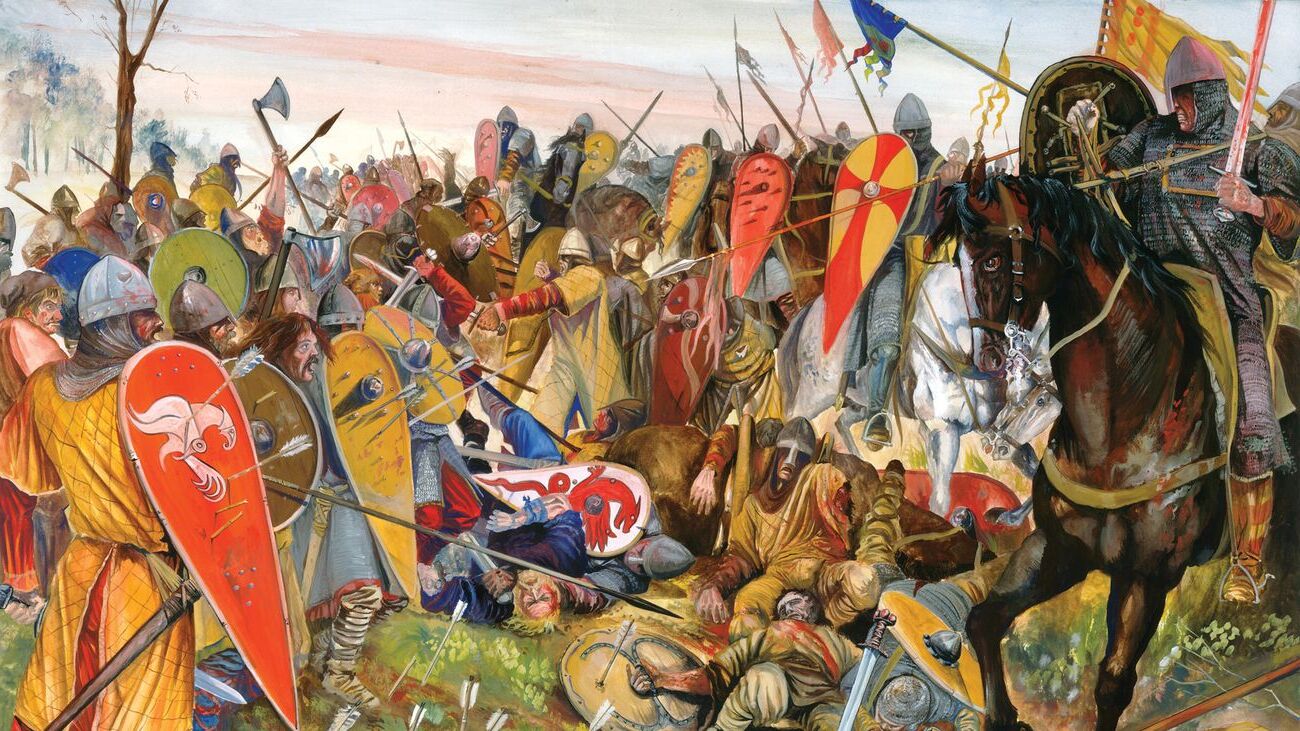
The Breton–Norman War was a series of conflicts between the Duchy of Brittany and the Duchy of Normandy during the 10th and 11th centuries. These clashes were fueled by territorial disputes, power struggles, and shifting alliances. William the Conqueror, a key figure in these wars, sought to expand Norman influence, while Breton leaders aimed to maintain their autonomy. The war's outcome significantly shaped the political landscape of medieval France. Understanding this war provides insight into the complex feudal relationships and the relentless quest for dominance in medieval Europe. Ready to dive into 25 intriguing facts about this historic conflict? Let's get started!
Key Takeaways:
- The Breton–Norman War was a medieval conflict between Brittany and Normandy over land. It involved key figures like William the Conqueror and Conan II, shaping the future of the region.
- This war had a lasting impact on medieval Europe, strengthening Norman power and reshaping feudal allegiances. It set the stage for future conflicts and alliances in the region.
Origins of the Breton–Norman War
The Breton–Norman War was a significant conflict in medieval Europe. It involved the Duchy of Brittany and the Duchy of Normandy, two powerful regions in what is now modern-day France. Here are some fascinating facts about this historical war.
- The war began in 1064 and lasted until 1066.
- The conflict was primarily over territorial disputes and control of land.
- William the Conqueror, Duke of Normandy, played a crucial role in the war.
- Conan II, Duke of Brittany, was William's main adversary.
- The war was part of a larger series of conflicts in the region during the 11th century.
Key Battles and Events
Several key battles and events shaped the course of the Breton–Norman War. These moments were pivotal in determining the outcome of the conflict.
- The Battle of Dinan in 1065 was a significant clash between the two forces.
- William the Conqueror laid siege to the town of Dol-de-Bretagne.
- Conan II attempted to recapture Dol-de-Bretagne but was unsuccessful.
- The Siege of Dol-de-Bretagne ended with William's victory.
- The war saw the use of early medieval siege tactics and fortifications.
Political and Social Impact
The Breton–Norman War had lasting effects on the political and social landscape of the region. These impacts were felt long after the conflict ended.
- The war strengthened William the Conqueror's position in Normandy.
- Conan II's defeat weakened Brittany's political power.
- The conflict led to changes in feudal allegiances and land ownership.
- Many local lords and knights were drawn into the war, affecting their territories.
- The war contributed to the eventual unification of Normandy and Brittany under a single ruler.
Notable Figures
Several notable figures played crucial roles in the Breton–Norman War. Their actions and decisions significantly influenced the course of the conflict.
- William the Conqueror later became King of England after the Battle of Hastings in 1066.
- Conan II was known for his fierce resistance against Norman expansion.
- Alan Rufus, a Breton noble, supported William and later became a prominent figure in England.
- Odo of Bayeux, William's half-brother, participated in the war and later became a powerful bishop.
- Ralph de Gael, another Breton noble, initially supported Conan II but later switched allegiance to William.
Legacy of the War
The Breton–Norman War left a lasting legacy in the history of medieval Europe. Its effects were felt for generations.
- The war demonstrated the growing power of the Norman dukes.
- It highlighted the strategic importance of Brittany in medieval politics.
- The conflict influenced later Anglo-Norman relations and territorial disputes.
- The war is remembered in various historical chronicles and accounts from the period.
- The Breton–Norman War set the stage for future conflicts and alliances in the region.
Final Thoughts on the Breton–Norman War
The Breton–Norman War was a pivotal conflict that shaped medieval European history. It wasn't just a battle for territory but a clash of cultures and ambitions. The war saw William the Conqueror and Alan III of Brittany vying for dominance, leading to significant shifts in power. This conflict also highlighted the strategic importance of alliances and the brutal realities of medieval warfare. Understanding these historical events provides insight into the complexities of medieval politics and the enduring legacy of these regions. The war's outcome influenced the future of both Brittany and Normandy, leaving a lasting impact on their identities. By examining these facts, we gain a deeper appreciation for the intricate tapestry of history that has shaped our world today.
Frequently Asked Questions
Was this page helpful?
Our commitment to delivering trustworthy and engaging content is at the heart of what we do. Each fact on our site is contributed by real users like you, bringing a wealth of diverse insights and information. To ensure the highest standards of accuracy and reliability, our dedicated editors meticulously review each submission. This process guarantees that the facts we share are not only fascinating but also credible. Trust in our commitment to quality and authenticity as you explore and learn with us.
